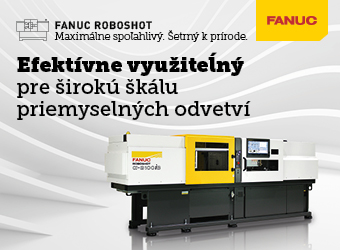HRSflow at K 2019: State-of-the-art hot runner solutions to be presented live at partner sites
At K 2019, which takes place from 16 to 23 October in Düsseldorf, challenging state-of-the-art applications of HRSflow’s FLEXflow hot runner technology will be presented at several booths of partnering machine producers. Some of these will use the company’s FLEXflow One electrically driven valve gate technology, where an additional control unit is not required during the injection process.
Sumitomo (SHI) Demag booth in Hall 15, Stand D22, the injection molding of an interactive dashboard which completely redesign vehicle interior. The part, is a clear example of how FLEXflow can manage PC back injection on IMD film preventing typical aesthetical defects of the application. The process includes also overmolding of capacitive sensors on back side to obtain a complete part after ejection. Technical features: overmolding with direct injection on IMD foil on A-surface and capacitive foil on B side, HMI, back-injection, sensoring, touch control. Project partners are including also: Kurz, Werkzeugbau Siegfried Hofmann.
ENGEL will present three applications of HRSflow’s hot runner systems at Stand C58 in Hall 15. This includes the injection molding of a complex PMMA lightguide produced with a 5 point-gating FLEXflow hot runner system in a complex family tool, resulting in an ultra-clean optical grade part for longer and more complex LEDs structures. Project partners are Volvo Cars, Inglass, DBM, Uddeholm, Cumsa, Kistler and Arkema. Beyond, ENGEL will showcase a ruler, injection molded from 100% recycled ABS, using a HRSflow hot runner system to maintain consistent shot weight and overcome other issues often connected with processing of recycled plastics.
Wittmann Battenfeld booth in Hall 15, stand C06, the injection molding of a demonstrator cover integrating backlight functions and capacitive sensor. The PC-ABS part produced with a FLEXflow One hot runner system, is an example of back-injection on new Kurz VarioForm film and includes a 3D shaped capacitive sensor. Technical features: IML, back-injection, sensoring, gesture control. The mold has been produced by GK Tool.
Krauss Maffei booth in Hall 15, stand B27, the production of an A-Pillar interior component, back-injected on a textile foil through a FLEXflow One 2 drops system. The project was conceived in cooperation with other partners such as GK Tool.
Yizumi booth in Hall 14, stand C59. Visitors will experience the production of an automotive engine cover realized with FLEXflow One system: the electrically driven valve gate technology where an additional control unit is not required during the injection process. The engine cover made of PA6- ABS GF20% has a high gloss PUR overmolding for a scratch resistant surface by Frimo. The part is a lightweight under the hood application conceived by GK Concept (Germany) expertise
Arburg in Hall 13 stand A13 PCR material (post-consumer recyclate) derived from household waste will be used to produce a handle for the safety door of ALLROUNDER injection moulding machines. An electric two-component ALLROUNDER 630 A produces the handle from PCR and TPE by using the ProFoam foaming process. Both foamed halves of the handle are mounted in the mould and then partially overmoulded with the soft component. The hot runner system, two drops valve gate, has been designed by HRSflow in order to ensure to perfect balancing of the two different cavities. A second system is used to inject the TPE component.
At its own booth D05 in Hall 1, HRSflow will present challenging applications of their FLEXflow hot runner technology together with recent developments targeted to improve the injection molding process. These include examples for perfectly balanced Family Tools with extremely different part volumes, an extended cylinder range, including a new series of Pneumatic Cylinders, as well as the new SA series of nozzles for small shot weights and HRScool, HRSflow’s innovative solution for hot runner injection molding in which water cooling of the associated actuators can be completely eliminated for the most common applications.
- autor:
- HRSflow


















